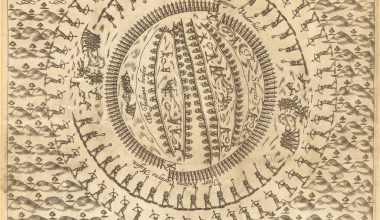Single page engraving from Athanasius Kircher’ Magnes, Sive De Arte Magnetica Opus Tripartitum…, published by Jodocus Kalhoven, in Cologne in 1643. The book was first published in Rome in 1641.
The Magnes was a treatise on magnetism, addressing its uses in practical fields, such as navigation and surveying, but also in the design and construction of scientific instruments and toys.
Kircher also devoted a chapter to musical magnetism, which contains a digression relating to the presence of tarantula spiders in Apulia, southern Italy.

The tarantula takes its name from the town of Taranto, the principal town of Apulia, near where the spider is found. A large spider, it is unusual in that it does not trap its prey by spinning a web, but rather uses its speed to catch its victims, before using poison, secreted from glands in the jaw, to despatch the victim.
In olden times, Apulia was known for the prevalence of a disease called ‘tarantism’, which induced an hysterical condition in the sufferer, with one characteristic feature being the sudden desire to dance, in a wild and rapid whirling motion. In fact, the dance was one of the body’s natural defences against the illness, with the rapid activity helping to work the illness out of the body, through perspiration. The Italian dance, the tarantella, originates from this.
While the name ‘tarantism’ is now believed to also have been derived from Taranto, it was previously commonly supposed, by Kircher for example, that the illness was a result of the bite of a tarantula spider, and that the name originated with spider. Accordingly, it was believed that the cure for the bite of the tarantula was to perform the dance.
Helpfully, Kircher depicts the region populated by the spider, and gives two drawings, the underside and top. Finally, should one be unfortunate enough to get bitten, Kircher gives a recommended piece of music – ‘Antidotum Tarantulæ’ – for the victim to dance to, to cure the bite!
Illustration courtesy of Sotheby’s, London.







